In the form of a mantel clock with fluting and a motif of crossed ribbons, the sides are decorated with a knot, a cascade of fruit, and foliage. The front features an openwork plaque decorated with two cherubs playing a wind instrument, leaning against an urn, their legs entwined in scrolling foliage. The clock is surmounted by a cherub perched on clouds, holding a spyglass in his right hand and a wreath of flowers in his left. The back has a gilt bronze door providing access to the movement. It rests on a projecting plinth of white Carrara marble adorned with interlacing motifs and gilt bronze rosettes. It stands on imposing round feet decorated with crossed ribbons.
The white enamel dial, with black painted Arabic numerals, is signed Léchopié à Paris. The fleur-de-lis hands are made of openwork, chased, and gilded bronze.
The movement (no. 1936), also signed Léchopié Paris, has an eight-day power reserve and strikes the hours and half-hours. The escapement is a lever escapement, and the suspension is by wire.
Attributed to: Michel Poisson, founder and bronze worker.
Period: early Louis XVI, circa 1775.
Dimensions: Height: 47 cm, Width: 31 cm, Depth: 15 cm.
Our model is similar to the clock "Love Conquers Time," signed by Poisson, which is listed below in "References" (see also the photograph). Our clock presents the same composition, with one variation: the cherub does not rest his foot on Chronos's head but on laurel branches. In art, Cupid is often depicted nude with flowers in his hand (or his bow). He is smiling and positioned on the clouds, appearing dominant and victorious.
Condition report: The clock is in excellent condition with its original mercury gilding. The entire piece is original (movement, dial, hands, etc.). The movement has been serviced and the bronze parts have been lightly cleaned. Shipping: We will ensure careful and secure packaging. Shipping will be handled by UPS with full insurance. Please contact us for a shipping quote.
LECHOPIE: Adam Lechopié practiced in the 18th century. He died before 1800 (date unknown). He was admitted on January 10th by privilege to the Hôpital de la Trinité (the journeymen and masters who trained the children there in a trade were housed by the hospital). He served on the jurors from 1772 to 1774. Syndic in 1779. Located on Rue Neuve des Petits-Champs in Paris. His widow continued the business from 1800 to 1830. He specialized in decorative clocks, using cases from renowned bronze casters and founders such as Goyer, De Saint Germain, F. Vion, Michel Poisson, LP Thomire, Osmond, etc. His clientele included Messrs. Sollier and the Marquis de Brunoy (Armand Louis Joseph Paris De Montmartel).
Lechopié clocks are held in the collections of: - the Royal Museums of Art and History in Brussels; - the Museum of Decorative Arts in Budapest; - the Louvre Museum, the Museum of Decorative Arts (Dolphin clock and Balloon clock), the Nissim de Comondo Museum in Paris, and the National Heritage in Spain. (Sources: Tardy Dictionary and Les ouvriers du temps by JDAugarde)
References: - The drawing project (watercolor and ink) is held at the Bibliothèque Nationale Supérieure des Beaux-Arts in Paris; - Model reproduced in "Les ouvriers du temps" by JDAugarde, page 139, photos 98 and 99. - See also the same model by Michel Poisson (founder), reproduced on page 259 in "Les bronzes dorés du XVIII" by Pierre Verlet. - White marble model reproduced in "La pendule française" by Pierre Kjelleberg, page 176, figure b.









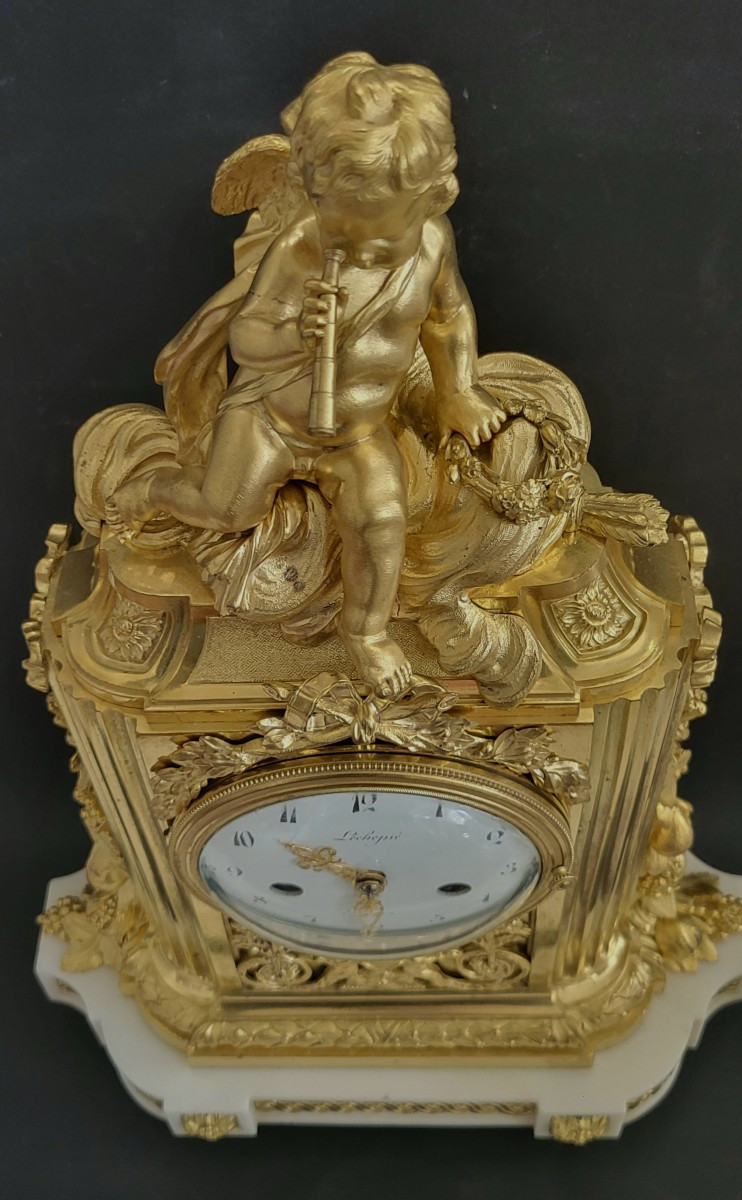
























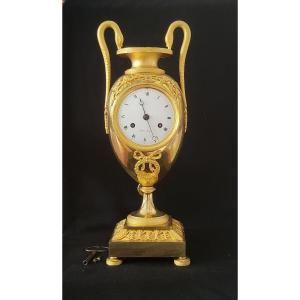
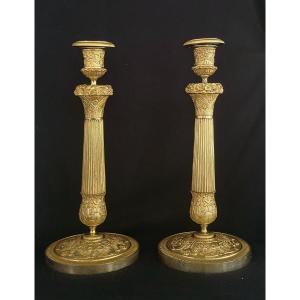




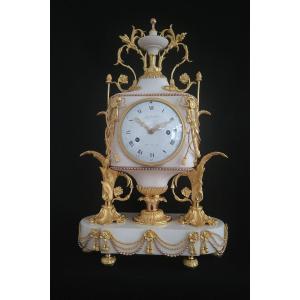


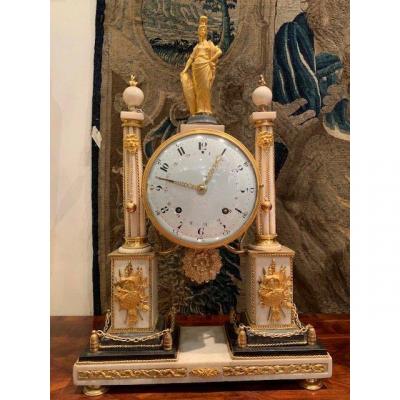
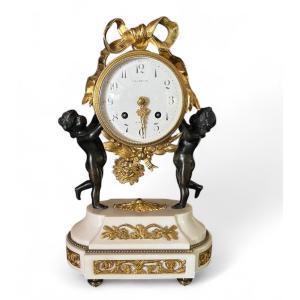





 Le Magazine de PROANTIC
Le Magazine de PROANTIC TRÉSORS Magazine
TRÉSORS Magazine Rivista Artiquariato
Rivista Artiquariato